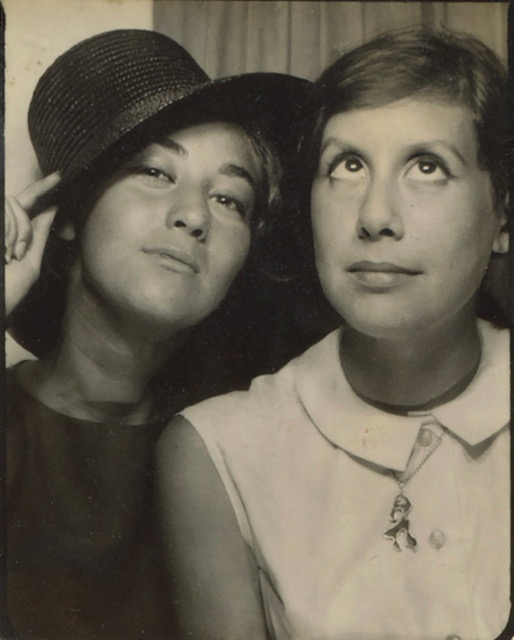The beloved aging king
and the old hag;
the silver sage and
the wise woman;
the doddering old fool and
the spinster sisters;
the venerated grandpa and
the irreverent great-aunt;
the wicked old witch and
the beautiful young queen.
. . .
Some of our earliest memories are of the fairy tales we heard as children. These yarns of magic, adventure and morals transfixed us, so we thrill in handing them down—and the many other books we think of so fondly from our own childhoods—to our children and grandchildren.
However, right alongside the wonder, some classic stories introduce stereotypes of aging that actually can be harmful to young children, according to nurse practitioner Sandra McGuire, who has studied ageism in children’s literature. Instead of showing kids that older people are important and productive members of society, books can pigeonhole aging characters as sad and sick, depressed about their age and wishing only for the past.
Education about aging is an urgent priority. Quality children’s books that offer a positive view of aging have an important role to play here; they can help root out distorted beliefs before negative ageist perceptions sink in too deeply.
The Silver Century Foundation has reviewed dozens of children’s books to help you choose those with positive, more realistic portrayals of older characters. These reviews—some of which are referred to in the text below—are grouped into age-related categories to make it easier to choose appropriate stories.
Reading Is Believing
Ageism in children’s literature is problematic because attitudes toward being old start in early childhood. Most American youngsters have a positive view of older adults in their own families but ambivalent or negative views of older adults they don’t know. Children start absorbing the language and culture around them from infancy, including, in the United States, a distorted perception of aging. By preschool, they demonstrate ageist language and behavior—attitudes that become harder to reverse as they approach adolescence.
Many young children believe what they learn from books is true, whether this is facts from a nonfiction book or implied value judgments from a fictional story. With limited exposure outside of family to older adults in real-life situations, children form their opinions of being old from books (as well as movies, overhearing adults’ conversations and the all-too-pervasive television).
Unfortunately, some of the first stories children may hear are fairy tales with wicked or weak older characters. Consider Little Red Riding Hood’s helpless, bedridden grandmother and the terrifying, evil queen whose jealousy drives her to poison the young, lovely Snow White. When children “meet” these characters—weak, ill, grumpy, tired, isolated, lonely, evil, unproductive, sad, poor, ugly and disinterested in life—they simply equate those fictional adults with real grown-ups.
Internalizing Ageism
This is harmful not only for the older adults with whom those children will interact but also for the children themselves. Research shows that ageist prejudices are often internalized as fear of becoming old. Young people who equate old age with illness, poverty, loneliness, dementia and so on may fear their own aging and not plan realistically for long, happy, productive lives—so their fears often become self-fulfilling prophecies as they grow older.
Children can have difficulty imagining that older people were younger once upon a time, or picturing themselves slowly growing older. They conceptualize adulthood, middle age and old age as distant realms that don’t apply to them, with distinct boundaries over which people abruptly tumble, like reaching a specific birthday and suddenly being old enough to drive.
Children’s literature can help allay this misconception by offering characters who experience aging as a gradual process that we all go through. Particularly for young children, there are too few stories that bring them into the lives of older adults beyond the grandparent/grandchild relationship to show older people not just as relatives but also as neighbors, workers and community leaders. Also, if children’s books offered more examples of adults planning to live long and well, children would be less likely to fear their own old age.
Finding a Positive, Realistic View of Aging
The good news is that you can find numerous books portraying spirited older adults interacting lovingly with children. Even some fairy tales have generous fairy godmothers, not just wicked witches, and the Wizard of Oz really is a rather appealing guy once Toto pulls aside the curtain. Literature for young people has long had a healthy share of grandparents, wise great-aunts, gentle widowers and friendly neighborhood characters that everyone knows and loves.
There is often a sweet, respectful relationship between young and old. The older character offers the wisdom of his or her years to the child, who accepts those lessons offered in a loving, familiar voice. Sometimes the child provides the guidance, helping the adult embrace aging and the gifts it brings. In Anne of Green Gables (1908) by Lucy Maud Montgomery, an 11-year-old orphan transforms the lives of an older man and his sister.
Children’s books are more likely than TV to portray older people positively. When they fail, you can use them to teach kids to question stereotypes.
In the past few decades, writers, illustrators and publishers of children’s books have become more careful about avoiding ageism, as well as racism and sexism. Older adults in children’s books increasingly have leading roles (protagonists rather than supporting characters) and more balanced, realistic lives, as in Sea Swan (1988) and Rules of the Road (2005). There are also more stories about intergenerational relationships and the sharing of an array of meaningful activities, as in both the Gus and Grandpa and the Wild at Heart series. Many stories from a variety of cultures show a deep respect for older characters and do a worthy job of celebrating the bonds between generations. See, for example, Aunt Flossie ’s Hats (and Crab Cakes Later) (2001), Tsunami! (2009) and Chasing the Jaguar (2006).
It can be challenging to find a variety of children’s books about people of color, though more have been published in recent years. Some authors choose to avoid culture or race by personifying animals, and crossgenerational themes are common. Those wise old badgers, owls, baboons and lions impart a positive sense, albeit rather simplified, of the wisdom that comes with living long. The Ultimate Guide to Grandmas & Grandpas! (2008) is a good example of this genre.
Teaching Critical Thinking by Reading Together
Reading with children is an excellent way to teach them to think critically about stereotypes. Children’s books have advantages over television when it comes to positive portrayals of older people. You will find more variety of older characters in children’s books than on TV, and because you can read books yourself before reading them aloud, you can be sure you like the message in the story.
In addition, you can pause while reading to discuss a book. This gives children time to digest the implicit and explicit messages in the tale. Remember, too, that many books offer much that’s worthwhile, even if you don’t agree with their entire message.
Because reading books together is such a personal experience—a quiet, bonding moment, perhaps at bedtime, between reader and listener—it can be a particularly strong influence for children. Simply choosing the right books for the youngsters in your life can have a significant impact on how they view older adults and aging and can go a long way toward counteracting ageist prejudices in our society.
The Silver Century Foundation’s book selections offer choices to help you add positive views of aging to your child’s reading list. Each category—
younger children (ages 3-8),
older children (ages 8-13) and
teens (13 and up)— provides perspectives that can help kids learn that growing older is a natural process that need not be feared, and that older adults themselves can be heroes and role models for all ages.
Rebecca Fishkin contributed to this article.
 Janet Frick is a freelance editor and writer with extensive experience in book publishing. She has edited fiction, nonfiction, and—particularly during the past 12 years—children’s and young-adult books. She is also an enthusiastic nature lover, photographer and amateur musician.
Janet Frick is a freelance editor and writer with extensive experience in book publishing. She has edited fiction, nonfiction, and—particularly during the past 12 years—children’s and young-adult books. She is also an enthusiastic nature lover, photographer and amateur musician.
 Janet Frick is a freelance editor and writer with extensive experience in book publishing. She has edited fiction, nonfiction, and—particularly during the past 12 years—children’s and young-adult books. She is also an enthusiastic nature lover, photographer and amateur musician.
Janet Frick is a freelance editor and writer with extensive experience in book publishing. She has edited fiction, nonfiction, and—particularly during the past 12 years—children’s and young-adult books. She is also an enthusiastic nature lover, photographer and amateur musician.


